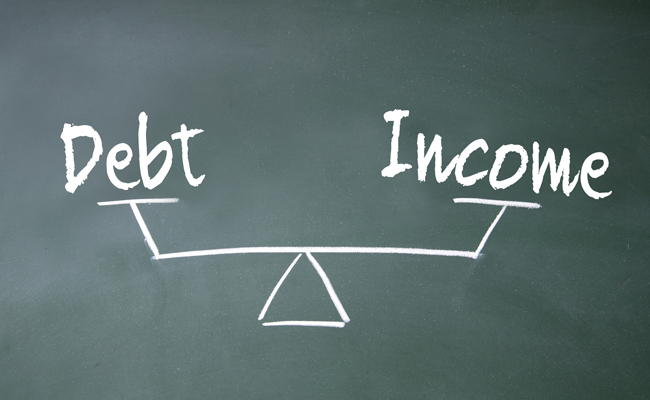What Is Debt-To-Income Ratio?
A person’s financial health goes beyond their gross monthly income. That’s why understanding personal finance factors’s a good idea, especially the debt-to-income (DTI) ratio. See what it means, what it’s made of, and how lenders use it when checking borrowers.
This article delves into the debt-to-income ratio, its computation, and tips to improve it.
What Is a Debt-to-Income Ratio?
Lenders such as banks examine borrowers’ financial health to see if they can approve their credit applications. This is where the Debt-to-Income Ratio (DTI) enters to help lenders and applicants.
Specifically, the assessment looks at the applicant’s income and expenses. Also, lenders want to know how the applicant handles their existing debts, if any.
Moreover, lenders perform these checks to spot any potential issues the applicant may have with repaying their debts. The debt-to-income ratio helps with this.
A person may lose their means of earning money which could affect their debt repayment. The debt ratio shows lenders how much likely a lender can keep on repaying their debts should this happen.
Lower DTI suggests better debt management. Lenders use DTI to assess creditworthiness and loan approvals, but it’s essential to consider other factors like credit history, savings, and life events affecting finances.
Read More: Consolidate Credit Card Debt: 5 Tips To Overcome Debt
What Are the Two Components of Debt-to-Income Ratio?
The formula for calculating the debt-to-income ratio is (Total Monthly Debt / Gross Monthly Income) * 100. To calculate DTI, divide Total Monthly Debt by Gross Monthly Income and multiply by 100 for a percentage. To be safe, the debt-t0-income ratio should be under 43%.
It consists of two key components:
Total Monthly Debt
This represents the sum of all monthly debt payments, including mortgages, loans, credit cards, and other outstanding debts.
Gross Monthly Income
This is the total amount of income earned before any taxes or deductions are taken out. This may include salaries, bonuses, and other income sources.
You May Also Like: Debt Management Methods: Successful Strategies for Your Debt
What Is the Function of the Debt-to-Income Ratio? 
If a company sustains a high debt to equity ratio for too long, it puts itself at greater risk for financial difficulty. The risks just grow as time passes.
Companies should curb their borrowing and boost their shareholder equity. That way, they could maintain a healthy financial position. Again, the debt to equity ratio divides its total liabilities with the total amount of equity held.
The debt to equity ratio may also show the amount of money a company owes per dollar of equity it holds. For example, let’s say a company had $60,000 of liabilities and $22,000 of shareholder equity.
It would have a debt-to-equity ratio of 2.73. This means that for every dollar of equity it holds, it owes $2.73 to its creditors. A lower ratio also makes the company more attractive to investors.
Read More: Should I Get a Credit Card: Things You Should Know
What Are the Factors Involving Debt-to-Income Ratio?
Let’s go back to our discussion about people’s financial health and their debt-to-income ratio.
Lenders often base their decisions based on an applicant’s minimum monthly repayments across their outgoing debt payments. Here are the other factors they may consider:
- Recurring mortgage debts
- Credit card payments
- Loan payments
- Childcare payments
- Other financial commitments
Some lenders may also look at any proposed new monthly debt payments. This info may help them estimate whether a borrower can still meet new debt obligations in case their income goes down.
Lenders may also look at other sources of income, not just the usual ones like salary or government benefits. For example, they might check income from part-time or freelance work.
In other words, lenders can choose which debts and earnings they include in the calculations. That’s why they have different ways of computing debt and income ratios.
This is also why applicants must include everything that could help in computing the debt-to-income ratio. As a result, lenders get a clearer picture of the applicant’s financial position.
What’s more, lenders may have different thresholds and standards when it comes to the debt-to-income ratio. Still, most lenders reject borrowers who have a debt-to-income ratio of 43%.
Similar to the debt to equity ratio, it’s best to keep it low. As we’ve discussed, lenders prefer a lower debt ratio. Alternatively, a higher ratio of debt and income shows lenders that an applicant may have trouble repaying if their earnings drop.
You May Also Like: Types of Credit Cards: Which Should You Get?
Tips on How to Have a Good Debt-to-Income Ratio
To achieve a good Debt-to-Income Ratio (DTI), you need to find a balance between what you owe and what you earn. These are the steps on how to improve your debt-to-income ratio:
Chip Away at Existing Debts
Start by tackling high-interest debts and make regular, on-time payments to bring down your outstanding balances. This approach will not only improve your DTI but also provide a sense of accomplishment as you make progress towards becoming debt-free.
Be Cautious with New Debts
Having a high DTI means you may already be stretched thin with debt, so it’s crucial to be cautious about adding more financial burdens. Unless it’s absolutely necessary, try to avoid getting new credit cards or loans to prevent further strain on your finances.
Boost Your Income
If your current salary cannot cover for your loan repayments and cost of living, try to think of creative ways to make more money. If possible, you can do extra jobs or even start a small business. Investing in the stock market and the real estate can also help out.
Craft a Budget
Track the money you earn and spend. When you know how much money is coming in and out, try to make a budget. Try to stick with it.
Live Within Your Means
Try not to spend too much on things you don’t really need. Simply buy things that you can afford or you really need.
Related Articles
The Debt Snowball Method: How to Get Out of Debt
Debt Avalanche Method: A Comprehensive Guide
Debt Settlement: How It Works, Risks, and Drawbacks
Consider Debt Consolidation
Debt consolidation means putting all your high-interest debts into one single loan with a lower interest rate. This way, you can make one easy payment instead of juggling multiple ones. Just imagine it like combining all your small debts into one big debt that’s easier to handle!
Communicate with Creditors
If you’re having trouble managing your debts, don’t hesitate to talk to the people you owe money to, like the credit card company or loan provider. You can re-negotiate what you need to pay per month.
Build an Emergency Fund
Set aside money for unexpected events like car repairs or medical bills. This stops you from needing to borrow money when unexpected things happen. So, when you have some extra cash, put it in your emergency fund to protect yourself and be prepared for any surprises!
Review Your Credit Report
Checking your credit report regularly helps ensure there are no mistakes that could affect your DTI and how lenders view you. When your credit history is clean and accurate, it shows that you’re responsible with money.
Seek Financial Guidance
Think of professional financial advice as having a super smart money coach. They’ll help you make a long-term plan to handle your debts and achieve your money dreams! Just like how you have teachers to guide you in school, these financial experts guide you on the path to financial success.
Conclusion
A company’s debt to equity ratio helps investors determine how risky it is to invest in it. Meanwhile, debt-to-income ratio helps lenders gauge the risk of approving a loan application.
A lower debt-to-income ratio may show that an applicant will still repay even during financial trouble. On the other hand, a higher figure would show that an applicant is more likely to pay late.
This is why you must reduce your debt ratio before applying for any form of credit. That way, you can see if you’ll be able to repay even during financial difficulty.
Read More: How to Pay Off Debt: 10 Ways to Kill Debt with a Low Income
Frequently Asked Questions
Why is Debt-to-Income Ratio important when applying for loans?
Lenders consider DTI to assess a borrower’s financial stability and ability to repay loans. A low DTI demonstrates responsible debt management and higher chances of loan approval with better terms and interest rates. It’s crucial to maintain a healthy DTI to increase borrowing potential and achieve financial goals.
Does Debt-to-Income Ratio affect mortgage eligibility?
Yes, DTI plays a significant role in mortgage applications. Lenders often have specific DTI requirements for mortgage approvals. A lower DTI increases the likelihood of qualifying for a mortgage with more favorable terms and a higher loan amount.
Can student loans impact my Debt-to-Income Ratio?
Absolutely. Student loans are included in the total monthly debt when calculating DTI. If you have substantial student loan payments, it can impact your DTI, affecting your ability to qualify for other loans like a mortgage or car loan.
Published on February 09, 2019; Updated on February 23, 2022; Updated on July 28, 2023.







